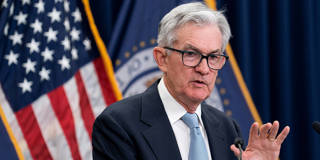The Fed’s dramatic interest-rate hikes have had dire implications for debt sustainability in the developing world. But the collapse of Silicon Valley Bank could lead to a rebalancing of monetary policy and, ultimately, a weaker US currency, which would go a long way toward easing financial conditions in low-income countries.
CAIRO – The US Federal Reserve’s decision to raise interest rates by 475 basis points over the course of 12 months, in a bid to curb inflation, was bound to be perilous. As should have been expected, it precipitated a dramatic shift in yield curves and exposed vulnerable financial institutions to interest-rate risks.
The collapse of Silicon Valley Bank (SVB), which was particularly exposed, with around 94% of its deposits uninsured, revealed the threat posed by the Fed’s strategy. But it also highlighted another major tension in the Fed’s monetary-tightening campaign, one of the most aggressive it has waged since the Volcker era: the trade-off between price stability and financial stability.
For months, the Fed’s dramatic rate increases elicited two primary concerns: how to bring inflation to heel without causing a recession, and the implications for fiscal and debt sustainability in emerging-market and developing economies (EMDEs), which are always among the first victims when major central banks tighten monetary policy.

CAIRO – The US Federal Reserve’s decision to raise interest rates by 475 basis points over the course of 12 months, in a bid to curb inflation, was bound to be perilous. As should have been expected, it precipitated a dramatic shift in yield curves and exposed vulnerable financial institutions to interest-rate risks.
The collapse of Silicon Valley Bank (SVB), which was particularly exposed, with around 94% of its deposits uninsured, revealed the threat posed by the Fed’s strategy. But it also highlighted another major tension in the Fed’s monetary-tightening campaign, one of the most aggressive it has waged since the Volcker era: the trade-off between price stability and financial stability.
For months, the Fed’s dramatic rate increases elicited two primary concerns: how to bring inflation to heel without causing a recession, and the implications for fiscal and debt sustainability in emerging-market and developing economies (EMDEs), which are always among the first victims when major central banks tighten monetary policy.